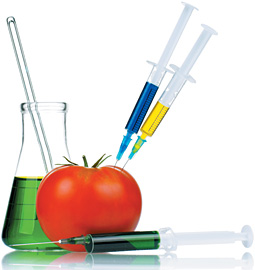Sales of organic foods increased from $1 billion in 1990 to $26.7 billion in 2010 in the U.S. alone, with most of the increase seen in the past few years. Since 2002, annual sales have increased by $18 billion.
A 45-year Medline search yielded 240 papers that met the review authors' inclusion criteria. Seventeen of the studies compared populations consuming organic or conventional or non-organic foods; the other 223 studies compared the levels and/or amounts of a variety of factors (nutrients-bacteria-fungus-pesticides) from numerous food types and/or classifications: fruits, vegetables, dairy (milk & eggs), grains, and meats (beef, chicken, pork), produced organically or normally. The duration of the studies involving human subjects ranged from two days to two years.
 Findings
Findings
- No significant difference in health benefits between organic and conventional foods based on the literature.
- No consistent differences in vitamin content between organic and conventional food.
- No consistent differences in mineral content with one exception — phosphorus, which was higher in organically grown fruits and vegetables.
- No difference in protein or fat content between organic and conventional milk.
- Organic milk contains higher levels of omega-3 fatty acids (authors noted limited studies).
- Pesticide levels of all foods generally fell within the allowable limits (although what is allowable and even measured is debated in some circles).
- Twenty-three percent of organic produce had pesticide contamination; 37 percent of commercial produce had pesticide contamination (30 percent higher than organic).
- Lower levels of urinary pesticide residues were noted in the two studies on children that compared organic foods to conventional foods.
- Both conventional and organic chicken and pork had bacterial contamination (which is why we cook these products).
- Twenty-one percent of organic chicken and pork contained bacteria resistant to three or more antibiotics. Forty-five percent of commercial chicken and pork contained bacteria resistant to three or more antibiotics (33 percent higher than organic).
Conclusion
According to the authors of the review study, "The published literature lacks strong evidence that organic foods are significantly more nutritious than conventional foods."1
Comment
This is an emotional topic and the release of this paper stimulated an emotional reaction. Please note that the authors did not say organic wasn't more nutritious; only that it wasn't significantly more nutritious. Of course, since many organic foods cost significantly more money, this becomes a big issue.
Part 2 of this article will focus on the main criticisms of the study and take a look at the synthetic chemical residues (acaricides, bacteriacides, fungicides, herbicides, insecticides, plant activators, soil fumigants) found on various foods to determine which ones are worth the higher cost of buying organic.
Reference
- Smith-Spangler C, Brandeau ML, Hunter GE, Bavinger JC, et al. Are organic foods safer or healthier than conventional alternatives? A systematic review. Annals of Internal Medicine, Sept. 4, 2012;157(5):348-366.
Click here for previous articles by G. Douglas Andersen, DC, DACBSP, CCN.





